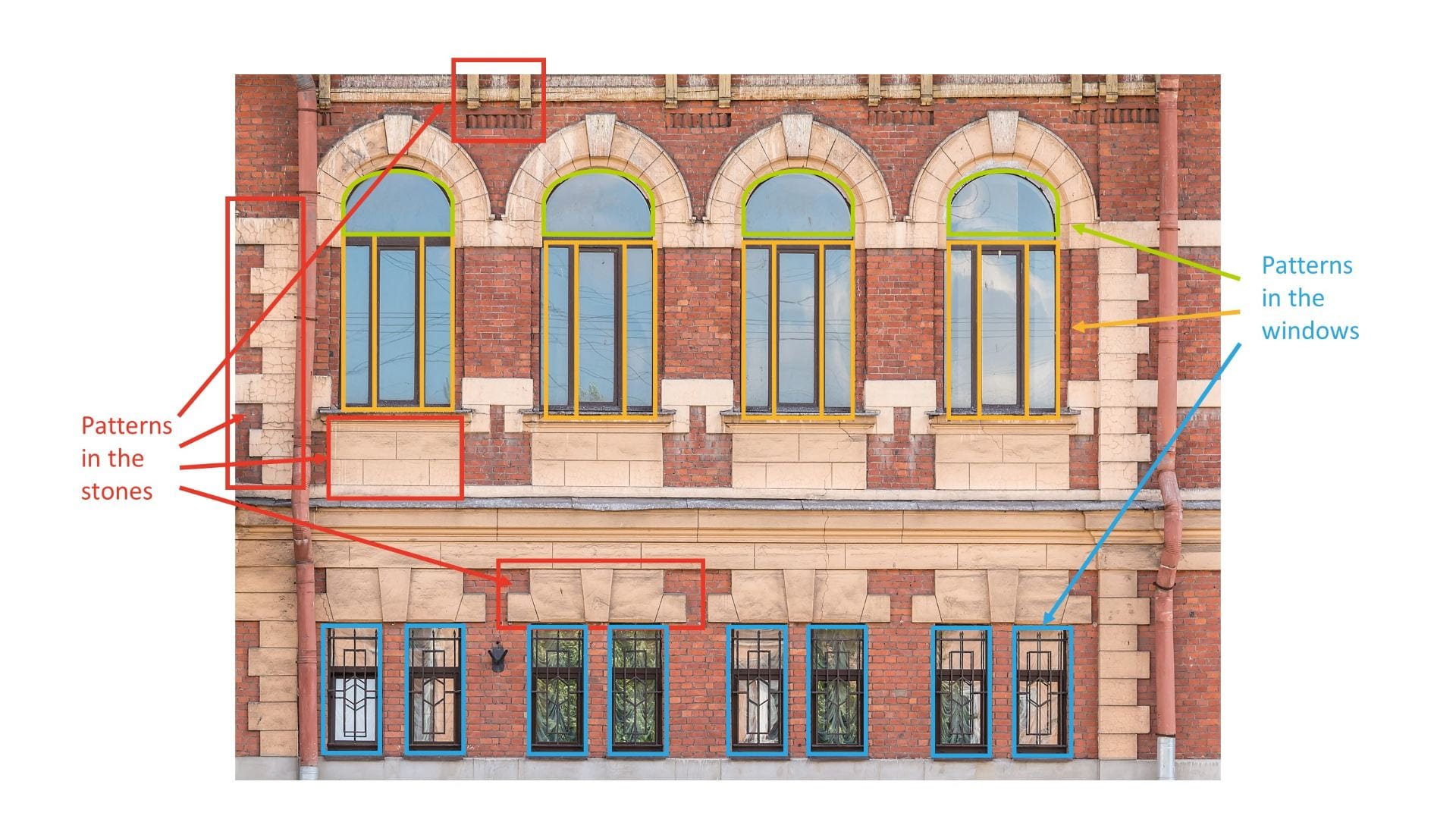Image of the Week: Patterning in the Real World
April 14, 2024Patterning in the Real World
Humans make and seek patterns everywhere we go. Our brains look for pattern and structure in every space as a way of making sense of our world. And mathematics is fundamentally about understanding patterns, making is a fundamental human activity. Wherever humans make their homes, they design spaces with rhythmic structures, embedding patterns in the streets, buildings, and communities. The human world is a rich and authentic source of complex patterns for students of all ages to notice, analyze, and extend. Take a look at our image of the week, taken from an apartment building in St. Petersburg, Russia. You’ll find similar structures in many cities around the world. What patterns do you see?
There are dozens of patterns embedded in the façade of this building. Notice the top row of windows with three panes and a semi-circle, repeated four times. Notice that around this row of windows there are downspouts and a pattern of light stones running vertically. This makes it possible to imagine that another set of four windows might appear to the left or right. Below, there are again four window features, but this time they are pairs of windows, each topped with a pattern of light stone. In fact, the stone itself holds many patterns, whether you look across the image from left to right, or vertically. You can begin to see a pattern of brackets peeking out of the top of the image, indicating that a whole new set of patterns exists on the next story. No matter what element you focus your eye on, you’ll see that it is part of a larger structure that repeats.

Often in school we ask students to look for patterns in artificial situations we have constructed, like a string of unifix cubes in alternating colors. We keep the patterns simple in the hopes this will help students identify and extend the pattern. But staying in this patterning space gives students the false impression that patterns are typically simple or only found in carefully curated spaces. In reality, in the real world, patterns overlap and interplay; they are in every space students see each day. Every time your students see a building or walk down a sidewalk, they are confronted with the patterns humans have created and they can be doing the mathematical work to understand how they organize our world.
Invite your students to examine patterns in the real world with this image of the week, or any of the dozens of other real world patterning activities we have on our website. After you try this activity with one of our images, consider taking your students on a pattern walk outside your school building! Schools are rich in patterns – in stones and windows like the image of the week – but also plants, sidewalks, doors, trashcans, downspouts, brickwork, roof lines, bike racks, stairs, handrails, and many other features. Students can take photos, draw sketches, or just point out to one another the patterns they see in a space at which they may have never looked closely.
To multiplicity, cheers!
Jen Munson and the multiplicity lab group

